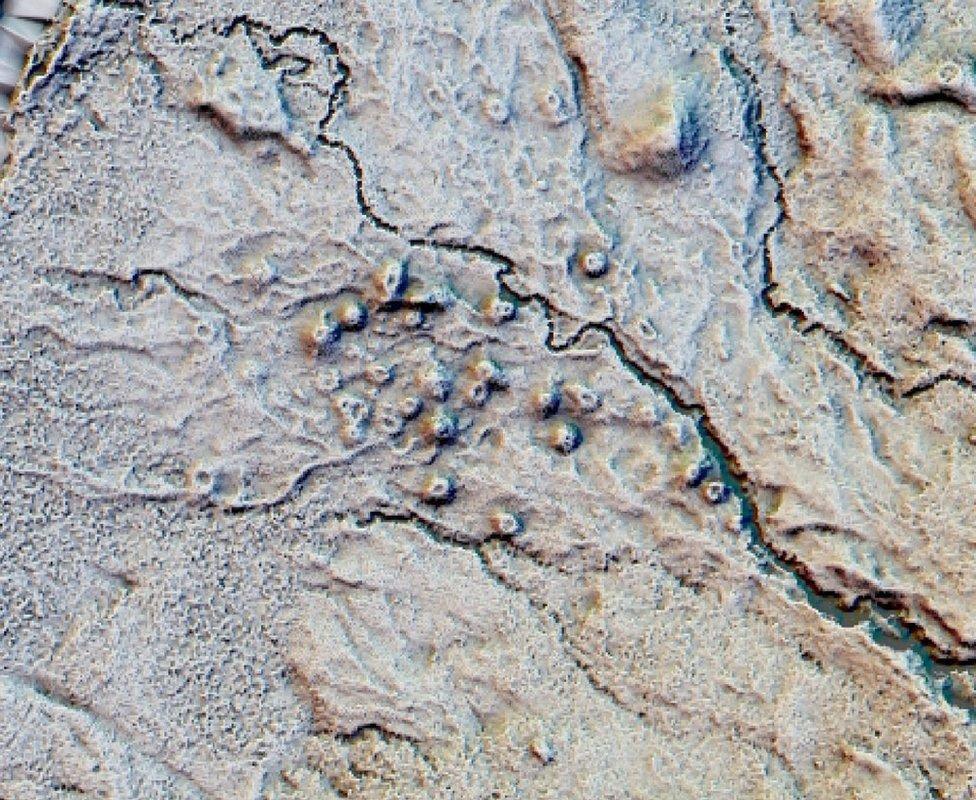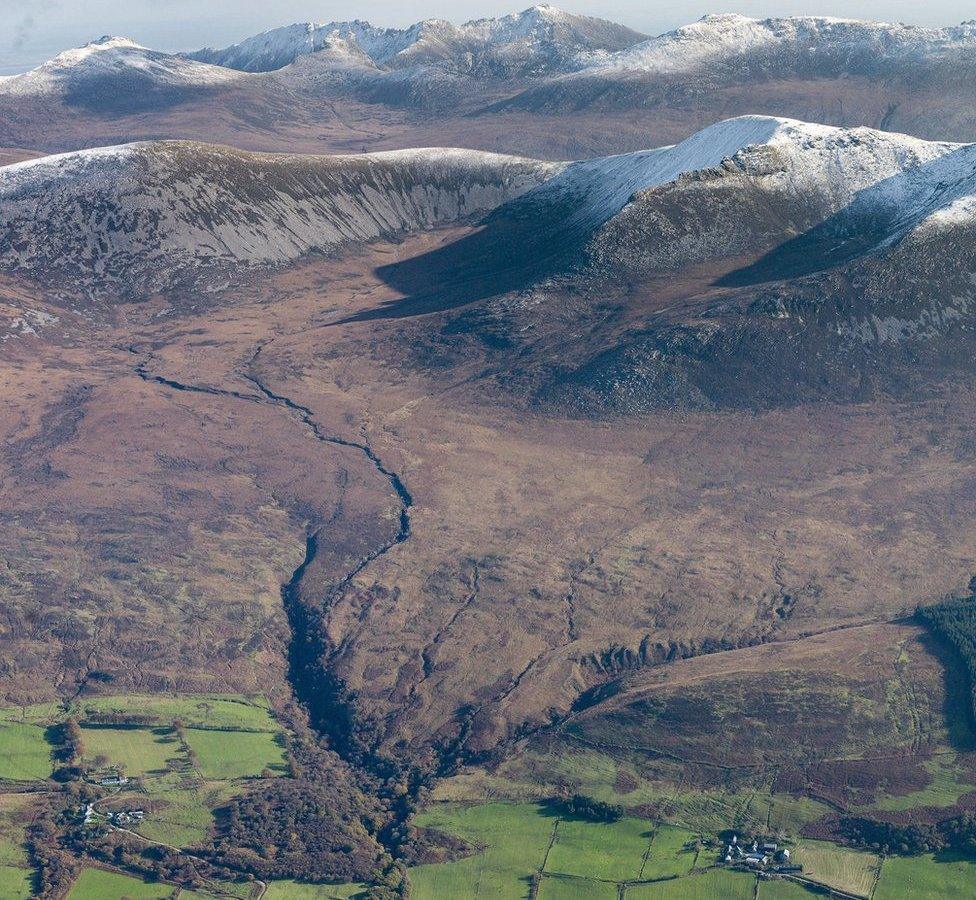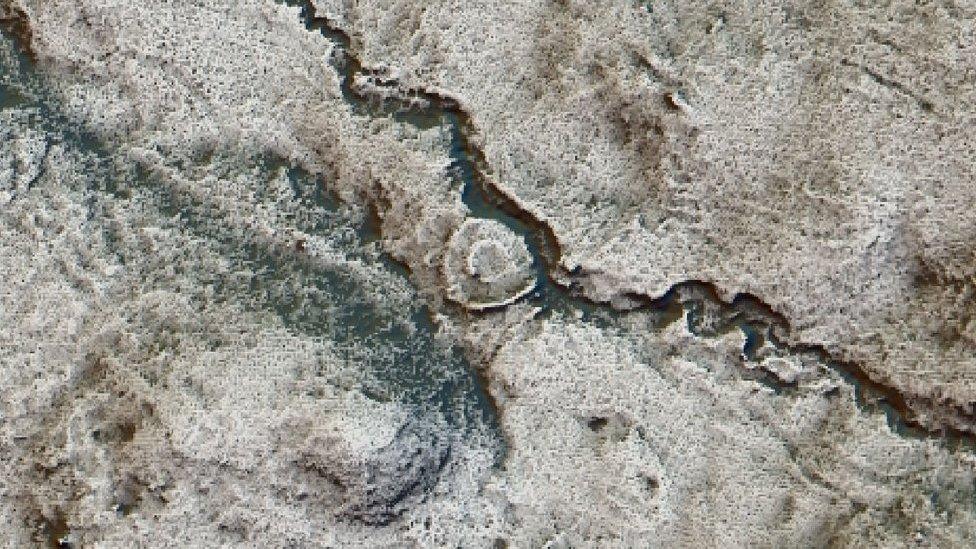Airborne laser scan reveals Arran's 1,000 ancient sites
- Published

Post-medieval shielings - temporary huts - were identified for the first time
A "cutting-edge" archaeological project has discovered about 1,000 sites of interest on Arran including prehistoric settlements and medieval farmsteads.
The island in the Firth of Clyde was scanned using airborne laser scanning.
The technique, known as lidar, created a 3D record of the land surface.
Archaeologists from Historic Environment Scotland (HES), who carried out the work, said it was the largest survey of its type ever undertaken in Scotland.
Among the discoveries was a cursus monument, a Neothlic ceremonial structure described as an exceptionally rare find on the west coast of Scotland.

The airborne surveys allowed the landscape to be studied in a relatively short time
HES rapid archaeological mapping manager Dave Cowley said: "This survey has shown us that there are double the number of ancient monuments on Arran than we previously knew about.
"This new 3D technology has allowed us to undertake a rapid archaeological survey, over weeks rather than months or years, and allowed us to discover sites that might even have been impossible to find otherwise.
"We have been able to see how densely settled parts of Arran were, and the medieval and post-medieval shieling sites that were discovered have told us how upland areas were used by shepherds."
Mr Cowley said this was an exciting time to be developing the technology and Arran was "just a first step".
He added: "As this technology becomes more widely available, we expect to find tens of thousands more ancient sites across the rest of Scotland - working at a pace that was unimaginable a few years ago."

The remains of a hut circle became clear from the scanning results
The images are available online at Canmore - Scotland's National Record of the Historic Environment, external.
The head of the HES analysis team Shona Nicol believes Scotland is at the forefront of using this technology.
"It is great to see HES making such exciting use of the increasing amount of remote sensing data becoming available which will help to play a part in keeping Scotland at the forefront in this field," she said.

Details of mine workings revealed by the survey